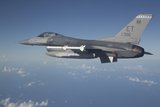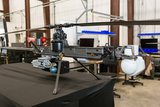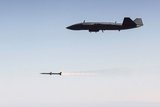Lockheed Martin “bullish” on future of its F-16 programme
The F-16 Block 70 for the Slovakian Air Force, two of which were delivered in 2024. (Photo: Lockheed Martin)
Lockheed Martin remains optimistic about the future of its F-16 programme, as demand for the 4th-generation fighter continues, with between 23 to 26 deliveries forecast for 2025 and a “ramp up” in production considered by the company in the future.
With more than 3,100 jets deployed across 28 air forces, demand remains strong for Lockheed Martin’s fighter with its latest variant. According to the latest statistics from the company, Lockheed has 117 Block 70 F-16 aircraft in its production backlog and has delivered 23 jets to international partners to date.
Currently, there are six countries under contract for the
Already have an account? Log in
Want to keep reading this article?
More from Air Warfare
-
![Anduril UK and GKN Aerospace collaborate on British Army ACP bid]()
Anduril UK and GKN Aerospace collaborate on British Army ACP bid
The pair will submit their demonstrator concept for Project Nyx, a development project for the British Army’s Land Autonomous Collaborative Platform.
-
![US Army command’s Picatinny CLIK common lethal drone interface makes progress]()
US Army command’s Picatinny CLIK common lethal drone interface makes progress
The Picatinny Common Lethality Integration Kit is designed to overcome the issue of unique integration methods between lethal payloads and drones as well as avoiding problematic acquisition conditions created by vendor lock.
-
![Australia invests extra A$1.4 billion in MQ-28A Ghost Bat after successful missile fire test]()
Australia invests extra A$1.4 billion in MQ-28A Ghost Bat after successful missile fire test
The investment includes new contracts for six MQ-28A Ghost Bat aircraft, as well as provisional funds to invest in the development of a Block 3 prototype.
-
![Northrop Grumman to fly new Project Talon CCA by late 2026]()
Northrop Grumman to fly new Project Talon CCA by late 2026
The newly unveiled collaborative combat aircraft looks to strike a balance between capability and cost-effectiveness, according to the company.
-
![MBDA and Lockheed move closer to F-35A Meteor flight tests]()
MBDA and Lockheed move closer to F-35A Meteor flight tests
Following the completion of successful ground tests, one more exercise remains before flight testing can begin.
























